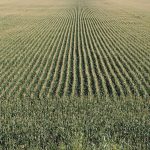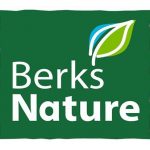The Understory: A State of the Environment Series is where Berks Nature takes a deeper dive into our 25 State of the Environment in Berks County indicators.
Indicator: Miles of Impaired Streams
Our world is waterlogged; the wettest it’s been in over a century. For the United States, May 2018 through May 2019 marked the 12 soggiest, consecutive months in 124 years. In Pennsylvania, torrential downpours, some dropping as much as 4 inches in just a few hours, elevated 2019 to the 7th wettest year on record.
With so much rain falling from the sky, it begs the question: where does all this water go?
Rain that is not absorbed by plants or can’t soak into the soil will instead rush over the ground and pour into nearby streams as stormwater runoff. On this road trip from rain drop to river, runoff picks up hitch-hikers: fuel residue on parking lots, loose dirt, animal waste, and leftover fertilizers and pesticides, to name a few.
Burdened with stowaway contaminants, the runoff flows into local streams. This is where the rain goes. This is the water we drink. This is the water we fish. This is the water that nourishes our forests and fields.
We can’t stop the rain from falling, but we can secure a safe passage for rainwater on its journey from cloud to stream.
In Berks County, where agricultural runoff is the leading threat to stream health, farmers are coming to the rescue and changing the way they cultivate the land for the love of water.
Love Farm of the Hay Creek Watershed
Doug Love has worked on his parent’s farm for most of his life. At an age when most people have comfortably retired, Doug and his wife, Marcia Cook-Love, purchased the family farm to protect it under increasing pressure to develop the land.
Located 20 minutes south of Reading, Pennsylvania in Robeson Township, the Love’s farm is a unique blend of wild and managed landscapes. Of the Love’s 78 acres, an exceptional 70% is forested. Alongside this woodland, the Loves raise cattle and sheep and cultivate sorghum and hay.
As life-long members of the Hay Creek Watershed Association and active members of the Robeson community, the Loves understood the special position of the farm to contribute to the watershed’s rich, ecological capital.
Two small streams originate on the Love’s farm. These streams flow into the cool, clean waters of Beaver Run, a Class A Trout Stream supporting wild populations of brown trout. Continuing downstream, Beaver Run drains into Hay Creek, which supplies drinking water to the Birdsboro Water Authority. Hay Creek flows on, eventually joining the Schuylkill River which supplies drinking water to millions of people downstream, including the City of Philadelphia.
Portions of Hay Creek are so clean that they have received an Exceptional Value designation from the Pennsylvania Department of Environmental Protection. Any pollution from adjoining tributaries, including Beaver Run, threatens the eminent health of Hay Creek, with implications for wildlife and water-drinkers downstream.
The forested headwaters of Beaver Run are Hay Creek’s first line of defense: the opportunity to protect and filter Hay Creek’s water at its source. But for Love’s farm to achieve its true potential as a guardian of Hay Creek, they needed to mitigate their agricultural runoff.
The Solution to Pollution
Agricultural runoff is one of the leading sources of pollution for rivers – especially in Berks County where 36% of the land is managed for agriculture and 78% of impaired streams suffer from overexposure to soil, manure, fertilizers, and other chemicals swept up from fields and pastures.
True, the nitrogen and phosphorus in fertilizer and manure are essential, naturally occurring nutrients, but moderation is best in all things, so the saying goes. Add too much of these nitrogen or phosphorus to streams and the bacteria and algae populations will boom. With nutrients abound, this population growth continues unfettered, rapidly consuming and depleting oxygen, and threatening life underwater for other plants and animals.
Erosion is another natural process, but too much dirt in the water can also spell disaster. Runoff can dislodge loose soil from tilled fields or bare stream banks, accelerating erosion and inundating streams with excess sediment, soil that has broken down into miniscule dirt particles. Muddy water threatens aquatic life by burying habitats, clogging gills, and shading plants from sunlight, preventing respiration and oxygen production.
Farmers like the Loves are increasingly trying to prevent these pollutants from entering streams, partnering with organizations like Berks Nature to tackle the task at hand.
When Berks Nature first joined forces with the Loves in 2017, they were taken by the farm’s lush forests and trickling headwater tributaries. However, as with many farm operations with uncertain successional ownership, little had been invested in the farm’s infrastructure over time.
Without proper management tools, the cattle and sheep roamed freely, wallowing in the stream and leaving manure scattered about the floodplain. Years of grazing and plodding through the water had stripped the barnyard bare and compromised the stream bank’s integrity, leaving the stream vulnerable to erosion and runoff.
To address these environmental concerns, Berks Nature sought out grant funding from programs dedicated to improving water quality through agricultural remediation. These funds were used to implement new conservation actions, known as Best Management Practices (BMPs), on the Love Farm.
To mitigate the agricultural runoff on Love’s Farm, Berks Nature, in partnership with the Natural Resources Conservation Service (NRCS), selected a suite of BMPs to address the greatest threats to stream health without interfering with Love’s ability to farm the land. The resulting Conservation Plan proposed solutions that targeted the Love’s livestock and barren stream banks.
The Loves installed new fencing to exclude livestock from most of the Farm’s woodland, including the forest growing alongside their two streams. Streamside forests provide a critical service to local waterways by filtering runoff and stabilizing stream banks with their robust root systems.
This fencing also prevents the Love’s livestock from entering the stream, removing the threat of manure falling directly into the water and the disturbance of hooved animals clambering up and down the steam’s banks.
But pity not the Love’s livestock for losing their waterfront leisure time. To replace stream access, the pastures are now equipped with water hydrants supplied by well water and internal paddock fencing to encourage rotational grazing. When not out to pasture, the cattle and sheep can now retreat to two newly constructed, paved and roofed, open-air buildings. These structures stabilize the ground against the cattle and sheep’s pounding hooves while also diverting fresh and clean rainwater away from their feces.
That manure does not go to waste. With the construction of two new, roofed storage facilities, the Loves can now collect manure from their livestock regularly and safely stash it away. The Conservation Plan instructs the Loves on the optimal timing and quantity of manure application for their fields to maximize plant growth and boost soil health. These new storage facilities can hold up to 6 months of manure – that’s a lot of dung cached away instead of flowing downstream!
The construction and installation of these and other conservation measures were completed in January 2020, but the remediation effort continues. Moving forward, Berks Nature continues to partner with the Loves to replant trees along their barnyard stream. With the livestock excluded, a new forest will flourish here, lending the stream shade with its leafy canopy above and support from its woody roots below.
The Future for Farm Water
Doug Love and Marcia Cook-Love are not alone in their efforts to mediate agricultural runoff. Since 2006, Berks Nature has helped over 50 farmers take action by implementing BMPs to protect the region’s streams.
It’s still too soon to measure the impact of the Love’s stewardship, but across the country scientists have endeavored to study and measure the effectiveness of BMPs. One review estimates that the livestock management practices adopted by the Loves can reduce pollution from nitrogen by 8-85%, phosphorus by 0-79%, and sediment by 0-90% (1).
Farmers can further ensure a reduction in pollutants by pairing livestock management with improved crop production practices. Back on the Love Farm, Doug Love grows all his crops without tilling the soil and has adopted a conservation crop rotation that cycles between sorghum, a cover crop, and hay.
This combination of practices will yield a greater benefit to stream health, giving the Love’s headwater tributaries their cleanest start before joining the Hay Creek downstream.
______________________________________________________________________________
What is State of the Environment?
The State of the Environment evaluates specific data and trends in five environmental categories: Air, Energy, Land, Waste, and Water. Within each category, several specific quantitative indicators are evaluated using available data, trends in the data are assessed, and specific action items that residents can practice to make each specific indicator more “positive” are identified. The five general environmental categories, as well as the specific environmental indicators evaluated, were selected by an interactive process. Berks Nature established subcommittees for each category, with each subcommittee headed by a professional with substantial experience in the specific field. These subcommittees discussed candidate indicators, and narrowed down the list of indicators to be used to 4-5 specific indicators where quantitative data were available.
While we could have selected many indicators regarding the health of the environment, our panel of experts chose the 25 contained in this report as a start. We pursued measurable, actionable data that would allow individuals, corporations and organizations to see where they could make lifestyle changes that would have increasingly positive effects on our local environment, the state, the country and the world. We used a third party consultant to research and write up the indicators and data. While we have tried to be as neutral as possible, obviously Berks Nature has a bias toward environmental conservation and protection. Rest assured, the data contained in this report is accurate and the facts will ultimately speak for themselves. We hope you learn something new, consider changing some of your behaviors as a result, and we invite you to become engaged in our work and that of other conservation and environmental organizations; the health of our community depends on it.




